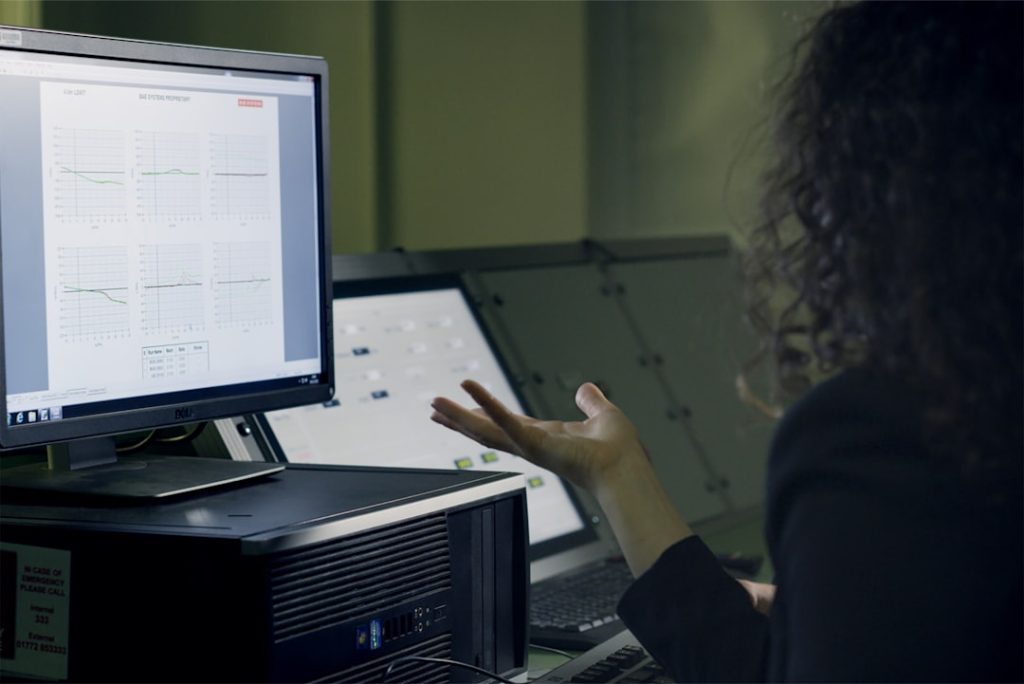Aerospace engineering is a multifaceted discipline that encompasses the design, development, and production of aircraft and spacecraft. This field combines elements of mechanical engineering, electrical engineering, materials science, and computer science to create vehicles capable of operating in the Earth’s atmosphere and beyond. The roots of aerospace engineering can be traced back to the early 20th century, with pioneers like the Wright brothers laying the groundwork for powered flight.
Over the decades, this discipline has evolved dramatically, driven by technological advancements and the increasing complexity of missions that require sophisticated engineering solutions. The significance of aerospace engineering extends beyond mere transportation; it plays a crucial role in national defense, global communications, and scientific exploration. The development of satellites has revolutionized telecommunications, weather forecasting, and navigation systems, while advancements in aircraft design have made air travel safer and more efficient.
As humanity looks toward the stars, aerospace engineers are at the forefront of designing spacecraft that can explore distant planets, study celestial phenomena, and even support human life in extraterrestrial environments. The challenges faced by aerospace engineers are immense, but so too are the opportunities for innovation and discovery.
Key Takeaways
- Aero Space Engineering involves the design, development, and testing of aircraft and spacecraft.
- Advancements in spacecraft design and technology have led to the development of more efficient and capable space vehicles.
- Innovations in propulsion systems, such as ion propulsion and nuclear thermal propulsion, are revolutionizing space travel.
- Artificial intelligence plays a crucial role in Aero Space Engineering, from autonomous spacecraft operation to data analysis.
- Sustainable space exploration requires careful consideration of environmental impacts and the development of eco-friendly technologies.
Advancements in Spacecraft Design and Technology
The evolution of spacecraft design has been marked by significant advancements that have transformed our ability to explore space. Modern spacecraft are equipped with cutting-edge technology that enhances their functionality and efficiency. For instance, the development of reusable launch systems, such as SpaceX’s Falcon 9 rocket, has drastically reduced the cost of access to space.
By allowing rockets to be refurbished and flown multiple times, these innovations have made space missions more economically viable and have opened up new possibilities for commercial spaceflight. In addition to reusability, advancements in materials science have led to the creation of lighter and stronger materials that can withstand the harsh conditions of space. Composite materials, such as carbon fiber reinforced polymers, are now commonly used in spacecraft construction due to their high strength-to-weight ratio.
This allows for more efficient designs that can carry larger payloads or travel further distances. Furthermore, the integration of advanced avionics systems has improved navigation and control capabilities, enabling spacecraft to perform complex maneuvers with precision. These technological advancements not only enhance mission success rates but also pave the way for more ambitious exploration goals.
Innovations in Propulsion Systems

Propulsion systems are a critical component of aerospace engineering, as they determine how effectively a vehicle can maneuver through different environments. Traditional chemical propulsion systems have served humanity well for decades; however, recent innovations are pushing the boundaries of what is possible. Electric propulsion systems, such as ion thrusters and Hall effect thrusters, are gaining traction due to their efficiency and ability to operate for extended periods.
These systems utilize electric fields to accelerate ions, providing thrust with significantly less propellant than conventional rockets. One notable example is NASA’s Dawn spacecraft, which utilized ion propulsion to explore the asteroid belt between Mars and Jupiter. This technology allowed Dawn to achieve a high delta-v (change in velocity) while using a fraction of the propellant required by traditional chemical rockets.
As research continues into advanced propulsion methods, concepts such as nuclear thermal propulsion and solar sails are being explored. Nuclear thermal propulsion could enable faster travel times for crewed missions to Mars by providing a higher thrust-to-weight ratio than chemical rockets. Meanwhile, solar sails harness the pressure of sunlight for propulsion, offering a potentially limitless source of energy for long-duration missions.
The Role of Artificial Intelligence in Aero Space Engineering
| Metrics | Data |
|---|---|
| Efficiency Improvement | AI can optimize aircraft design and performance, leading to fuel efficiency and reduced emissions. |
| Autonomous Systems | AI enables the development of autonomous drones and aircraft, reducing the need for human intervention. |
| Maintenance Predictions | AI can analyze data to predict maintenance needs, reducing downtime and improving safety. |
| Simulation and Testing | AI allows for advanced simulations and testing of aerospace systems, leading to faster development cycles. |
| Enhanced Safety | AI can improve safety through advanced collision avoidance systems and real-time decision making. |
Artificial intelligence (AI) is increasingly becoming an integral part of aerospace engineering, enhancing various aspects of design, operation, and maintenance. AI algorithms can analyze vast amounts of data generated during flight tests or simulations, identifying patterns that may not be immediately apparent to human engineers. This capability allows for more informed decision-making during the design process and can lead to improved performance and safety outcomes.
Moreover, AI is playing a pivotal role in autonomous flight systems. Drones and unmanned aerial vehicles (UAVs) equipped with AI can perform complex tasks such as obstacle avoidance, route optimization, and real-time data analysis without human intervention. For instance, NASA’s X-57 Maxwell project aims to develop an all-electric aircraft that incorporates AI for flight control and optimization.
By leveraging machine learning techniques, these systems can adapt to changing conditions in real-time, enhancing safety and efficiency during operations.
Sustainable Space Exploration: Environmental Considerations
As space exploration continues to expand, so too does the need for sustainable practices within aerospace engineering. The environmental impact of rocket launches has come under scrutiny due to concerns about greenhouse gas emissions and atmospheric pollution. Traditional rocket propellants often release harmful byproducts into the atmosphere, prompting researchers to explore greener alternatives.
Biopropellants derived from renewable resources are being investigated as potential substitutes that could reduce the carbon footprint of space missions. Additionally, the concept of sustainability extends beyond launch emissions; it encompasses the entire lifecycle of aerospace projects. Engineers are increasingly considering end-of-life scenarios for spacecraft and satellites to mitigate space debris accumulation in Earth’s orbit.
Initiatives such as active debris removal technologies aim to address this growing concern by developing methods to capture and deorbit defunct satellites or spent rocket stages. By prioritizing sustainability in aerospace engineering practices, the industry can ensure that future generations can continue to explore space without compromising the health of our planet.
Space Tourism: Opportunities and Challenges

The emergence of space tourism represents a new frontier in aerospace engineering, offering unprecedented opportunities for commercial ventures while presenting unique challenges. Companies like Blue Origin and Virgin Galactic are pioneering suborbital flights that allow civilians to experience weightlessness and view Earth from space. These ventures not only generate excitement but also stimulate interest in STEM (science, technology, engineering, and mathematics) fields among young people.
However, the path to successful space tourism is fraught with challenges. Safety remains a paramount concern; ensuring that commercial spacecraft can withstand the rigors of launch and re-entry while protecting passengers is critical. Regulatory frameworks must also evolve to accommodate this burgeoning industry, addressing issues such as liability and airspace management.
Furthermore, the environmental impact of increased launch frequency must be carefully considered to avoid exacerbating existing concerns related to atmospheric pollution.
Collaborations and Partnerships in Aero Space Engineering
Collaboration is a cornerstone of progress in aerospace engineering, as complex projects often require expertise from multiple disciplines and organizations. Public-private partnerships have become increasingly common as governments seek to leverage private sector innovation while maintaining oversight on national security concerns. NASA’s Commercial Crew Program is a prime example; it partners with private companies like SpaceX and Boeing to develop crewed spacecraft capable of transporting astronauts to the International Space Station (ISS).
International collaborations also play a vital role in advancing aerospace engineering initiatives. The International Space Station itself is a testament to global cooperation in space exploration, involving contributions from multiple countries and agencies. Such partnerships facilitate knowledge sharing and resource pooling, enabling ambitious projects that would be challenging for any single entity to undertake alone.
As humanity’s aspirations in space continue to grow, fostering collaboration across borders will be essential for addressing shared challenges and achieving collective goals.
The Future of Aero Space Engineering: Potential Breakthroughs and Developments
Looking ahead, the future of aerospace engineering is poised for remarkable breakthroughs driven by ongoing research and technological advancements. One area ripe for exploration is the development of hypersonic flight technology, which could revolutionize air travel by significantly reducing flight times across long distances. Companies like Hermeus are working on hypersonic aircraft that could travel at speeds exceeding Mach 5, potentially transforming global transportation networks.
Additionally, advancements in space habitats are on the horizon as humanity prepares for longer-duration missions beyond low Earth orbit. Concepts such as lunar bases or Martian colonies require innovative engineering solutions that address life support systems, radiation protection, and sustainable resource utilization. The integration of biotechnology into aerospace engineering may also play a crucial role in developing closed-loop life support systems capable of sustaining human life on distant planets.
As we stand on the brink of a new era in aerospace engineering, it is clear that the possibilities are vast and varied. From sustainable practices that protect our planet to groundbreaking technologies that redefine our understanding of flight and exploration, the future holds immense promise for those dedicated to pushing the boundaries of what is possible in this dynamic field.


